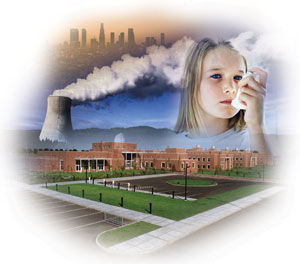Fake but Accurate -- Now Coming to the Hard Sciences
Most of us remember the famous "fake but accurate" defense of Dan Rather's story on GWB using forged National Guard documents. If the post-modernism movement were to have an insignia, their tag line (their "E. Pluribus Unum') could well be "fake but accurate."
I have written for a while that post-modernism seems to be coming to the hard sciences (I differentiate the hard sciences, because the soft sciences like sociology or women's studies are already dominated by post-modernist thinking). For example, I quoted this:
For
those of you who cling to scientific method, this is pretty bizarre
stuff. But she, and many others, are dead serious about it. If a
research finding could harm a class of persons, the theory is that
scientists should change the way they talk about that finding. Since scientific method is a way of building a body of knowledge based on skeptical testing, replication, and publication, this is a problem.The tight framework of scientific method mandates figuring out what would disprove the theory being tested and then looking for the disproof.
The thought process that spawned the scientific revolution was
inherently skeptical, which is why disciples of scientific method say
that no theory can be definitively and absolutely proved, but only
disproved (falsified). Hypotheses are elevated to the status of
theories largely as a result of continued failures to disprove the
theory and continued conformity of experimentation and observation with
the theory, and such efforts should be conducted by diverse parties.Needless to say postmodernist schools of thought and scientific method are almost polar opposites.
So here is today's example of fake but accurate in the sciences, not surprisingly also from climate science:
While the critic's advice - to use trained statisticians in studies
reliant on statistics - may seem too obvious to need stating, the
"science is settled" camp resists it. Mann's hockey-stick graph may be
wrong, many experts now acknowledge, but they assert that he
nevertheless came to the right conclusion.To which the critics,
and doubtless others who want more rigourous science, shake their heads
in disbelief. They are baffled by the claim that the incorrect method
doesn't matter because the answer is correct anyway. With bad science, only true believers can assert that they nevertheless obtained the right answer.
A huge number of physicists and geologists who actually take the time to look into the details of climate science come away being shocked at the scholarship. Take a world class physicist, drop him into a discussion of the details of the Mann hockey stick analysis, and in an hour you will have a skeptic.
Crazy? Remember the words of from National Center for Atmospheric Research (NOAA) climate researcher and global warming action promoter, Steven Schneider:
We
have to offer up scary scenarios, make simplified, dramatic statements,
and make little mention of any doubts we have. Each of us has to decide
what the right balance is between being effective and being honest.









